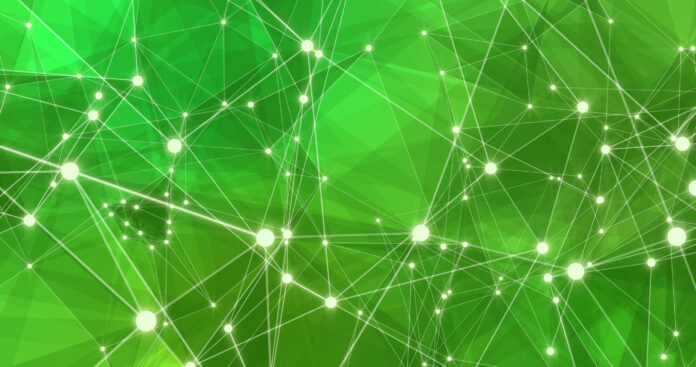What is circularity and why does it matter in value chain emissions?
Scope 3 emissions are a broad category of environmental impacts related to a company’s business, which are outside its direct operations but that nonetheless are part of the enterprise’s value chain—from good and services needed for its business operations, to the transportation, use and end-of-life of products that it sells.
At the recent Telco Sustainability Forum, the discussion around these “value chain emissions” centered largely on the related challenges.
For context, panelist Bhushan Joshi, chair of the Green G working group at the Next G Alliance and Ericsson North America’s head of sustainability and corporate responsibility, outlined the current, “linear” system of the global economic model: Raw materials are extracted from the environment and used to make products, and when those products reach the end of their useful lives, most of them are discarded. “It’s cost-efficient in the short term, but long-term, it leads to resource depletion and environmental degradation,” he summarized.
Circularity instead takes a “cradle to cradle” approach, which means designing products and processes with the goal that material never becomes waste—that when products reach the end of their lifecycle, they are refurbished or recycled, and the material becomes an input in the system.
“While this concept seems pretty straightforward, I think what we have to do is, we have to recognize that we are far, far from reaching that,” he said.
He cited a “circularity gap” report which found that only 7.2% of the materials of the global economy are secondary or recycled—and the percentage has actually shrunk since 2018. Meanwhile, e-waste—a major concern for the telecom industry, when it comes to improving sustainability and sustainability—is growing rapidly and only about 22% of it was recycled in 2022, according to the latest annual report by the United Nations Institute for Training and Research.
Xhoana Shehu, policy manager at operator advocacy organization Connect Europe, laid out multiple ways that operators are working to improve the sustainability of their businesses, including decommissioning legacy networks, sourcing more of their energy from renewable energy sources, and increasing the circularity of their supply chain.
Scope 3 emissions, she continued, are a major challenge for the ICT sector. They account for about 81% of telecom carbon emissions but are also the hardest to have an impact on and measure. However, Shehu said, some operators are beginning to report on metrics such as total waste generated, total waste reduced, recycled and refurbished, which are helpful insights when it comes to value chain emissions.
Circularity improvements can reduce the environmental and carbon footprint of a company’s supply chain, improve the management of raw materials and also has “great potential” for job creation, she added. An Accenture report has also estimated that an estimated $4.5 trillion in value is in play in the transition to a circular economy.
“I think circularity is not so much a state that you get to, but rather, I think it’s … a pathway to have a more sustainable, resilient and vibrant economic future,” Joshi said.
Joshi laid out a number of challenges for the telecom sector when it comes to addressing value chain emissions.
–Value chain emissions are not under an operator’s direct control. Firstly, he said, by their very nature, Scope 3 emissions are things that an operator has limited direct control over. While that is not to say that companies have no influence on them, it is more difficult to make an immediate impact.
–They are disparate in nature. Secondly, the value chain emissions cover such a wide range of sources, from transportation to investments and devices, and each of them require a tailored strategy and distinct approach to addressing them. And telecom companies have vast supply chains. But, he said, he does see telecom companies grappling with these complexities through setting up targets and requirements which require their suppliers to set their own sustainability-related targets or work together on products with more circular design principals incorporated.
–Disparities in the availability of, and access to, renewable energy sources. This is key to decarbonization of the telecom sector, Joshi said, but the uneven access makes it more difficult for operators to tackle their Scope 2 or direct emissions—which also get counted in vendors’ Scope 3 or supply chain emissions.
–Measurement and reporting on value chain emissions. The final challenge he mentioned is simple in measurement and standardization around Scope 3 emissions. There are some guidelines from organizations such as GSMA, but there is more work to be done to ensure consistent and reliable reporting.
One of the aspects driving interest in circular economy concepts right now is increasing supply chain resiliency, he added—particularly for rare earth minerals, which at this point are hardly ever recycled. A GSMA report has also estimated that there are about 5 billion dormant used phones around the world, which consumers are holding onto, Shehu said—which is an opportunity for operators to both improve their Scope 3 emissions through more robust incentive programs for customers to turn in such devices, but also potentially to reclaim additional devices for refurbishment and materials in those devices for recycling or reuse.

Shehu also offered several recommendations on policy positions that can help with improving telecom sustainability and circular economy integration: Setting ambitious targets; require reporting; align policy with circular economy principals such an incentives around repair and repurposing, and incentives that make business models for secondhand markets more attractive for businesses to participate in.
Watch the full session and additional content from Telco Sustainability Forum on-demand here.

